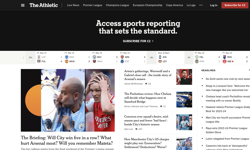Publishers, like many other businesses, are in trouble. The ongoing effects of the recession are having a direct impact on advertising sales, and as budgets remain limited, these media owners are faced with falling incomes, and must look to other sources of revenue in order to survive.
Plummeting ad revenues
According to a recent report from Reuters UK, national newspaper advertising revenues fell 23% in the first three months of 2009, and a further 12% in the quarter that followed.
British regional newspapers fared no better; advertising revenues dropped 36% in the first quarter of the year, compared with 33% in the second. Shocking statistics indeed, especially considering that approximately 70% of a regional newspaper title’s revenue comes directly from advertising. Consumer and B2B magazine titles have suffered similar, if less drastic, fortunes.
Salvation online?
The shrinking pool of advertisers has forced many publishers to cut back on printing and reduce their circulation numbers. In some extreme cases, print titles are even closing. For example, Maxim, a magazine famous for its position at the vanguard of “lad” culture, closed its UK print edition in June, after 14 years on the shelves. However, the brand lives on via a website, and many other publishers have invested heavily in online properties in recent years, in the hope that they can attract readers through this channel and secure advertising budgets. Especially as advertising spend online continues to grow at a rapid pace, the solution seemed simple; publish titles online, and fund them through advertising.
Unfortunately this strategy does not seem to be working. Marketing spend is being directed online, but with competition from a wide range of digital techniques, from search to CRM, the humble classified ad, albeit in digital format, simply cannot compete. And brands are looking for more in terms of visibility and engagement than most online publications can currently deliver.
In fact, it seems that the fragmenting media landscape only serves to compound this issue further; what little budget there is available is spread across a variety of media platforms and digital disciplines. This fragmentation also makes it difficult for a publisher’s brands to engage a consistent audience, further reducing their bargaining power when it comes to securing spend.
Arguably, and putting recessionary concerns aside for a moment, the rise of the internet and growth in digital channels and capabilities has become the single greatest threat to publishers, not least because of the competition the internet presents, and its unsuitability to house the traditional ad-funded revenue model.
But let’s not panic just yet. Digital also brings with it the most important opportunity for evolution in the media and publishing sector, if media owners are prepared to embrace a new way of thinking. If they do, the benefits are there for the taking.
Data opportunities
There is a huge opportunity to maximise revenue by collecting and monetising data on readers. This may seem nothing new; after all, publishers have been selling subscriptions data for many years. But the difference here is in expanding the information being collected, so a richer and infinitely more valuable asset can be traded.
Traditional subscription data has always been a core revenue stream for many publishers, but in recent years this income has come under threat. As the marketing and communication strategies of brands have changed, so too has the kind of data required to drive their campaigns. Put simply, recency is in, and tired old subscription lists are out. Here, the growth in digital has meant that brands can access up-to-the-minute data on customers and prospects from a variety of sources. Therefore to stay relevant and be able to generate revenue from reader data, publishers also need to embrace a more immediate form of data collection.
Capturing more data
So what’s the solution? The most immediate approach and one which can tap into fresh sources of valuable insight, is to improve and expand the collection of reader data. For instance, as they interact online (either visiting the site to consume news and other content, or to engage with the brand via a competition), serve them dynamic questions based on what gaps are missing in the data already held on them.
Creating a stock of questions which can be served up to each individual based on what you want to know about them next, can fast become a prolific stream of new data and can help to turn reader and subscriber data into an up-to-the-minute, monetised resource. This approach also avoids asking the same individual the same question over and over again; reducing the annoyance felt by some when asked to repeat information.
For example, asking for basic information first such as address and size of household can be followed by other questions designed to extract more detailed demographic knowledge. Here advertisers and other partners can get involved, helping to design questions based on their own requirements. For a premium, they can engage with the readership, find out their views on an infinite range of subjects, and collect all-important data to enable them to interact with each individual further.
Competitions are another good source of interaction. Brands can record details from entrants which will give them the opportunity to access more than just a name and contact details. The advantage of using a competition strategy is the potential collation of a dynamic database. Put simply, a competition encourages more readers / consumers to share their details. Incentivising with a partner shares the cost and improves the return.
Exclusive content can also be a useful tool in encouraging readers to impart information on themselves. Asking them to register to access a special ‘members only’ area of the site can instigate a relationship based on the premise of ‘content for questions’.
Using the data
Of course the data is immediately available for the publisher to use within its own business. Advances in technology mean data can be delivered back into the database immediately, so it’s readily available to enhance marketing and customer communication straight away. Data could assist with informed decision making, for example supporting the development of a new magazine or product launch with specific questions to potential readers within the existing audience. It could also aid subscription retention and acquisition through the ability to segment customers and target them with differing treatments and offers.
Increased insight on readers can also be a powerful draw for advertisers; with the offer of improved demographic information, strong affinity partnerships can be built and general ad sales can be supported through more refined targeting. With this, powerful asset readers can be better engaged by the publisher with content and offers tailored and targeted to each individual.
Selling the data
Next is the opportunity to generate revenue by making the data available externally. Underpinning any data sales must be the correct permissions from each individual; something that can be generated from the outset of the relationship by asking them their communication and channel preferences. The dynamic questions served can also be set up to make sure permission is at the top of the list in terms of questions being directed at readers, so all data is appended with this important attribute.
Once the correct permissions are available, data can be sold to relevant third parties as it is generated. As I’ve already mentioned, there is an opportunity for partners and advertisers to utilise the dynamic nature of serving questions even further, through the creation of tailored questions, designed to collect insight and opinions from readers which are unique and relevant to their own marketing efforts and activity. Because of its unique nature, bespoke data can be sold at a premium, thus creating another rich revenue stream for the publisher.
The opportunity for publishers to engage their readers and increase the amount of data collected from them is unrivalled, and can easily deliver ongoing cash injection into the publishing business model. What’s more, the technology behind the dynamic serving of questions doesn’t have to be based solely online; staff using PDAs at events and exhibitions could also engage with the audience to collect relevant information, and even a customer services and subscriptions line could be set up to instigate a similar form of dynamic data collection.
Business and brands are fast recognising that customer data is the foundation of successful marketing, so tapping into this rich vein of information can provide publishers with all the data they need to develop a real understanding of their readers, in order to improve and enhance their online offering, as well as creating a huge range of revenue generating opportunities externally. As long as all data that is sold adheres to data protection rules, through solicitation of the correct and necessary permissions, publishers should experiment with and embrace reader data as a much needed monetary boost.










